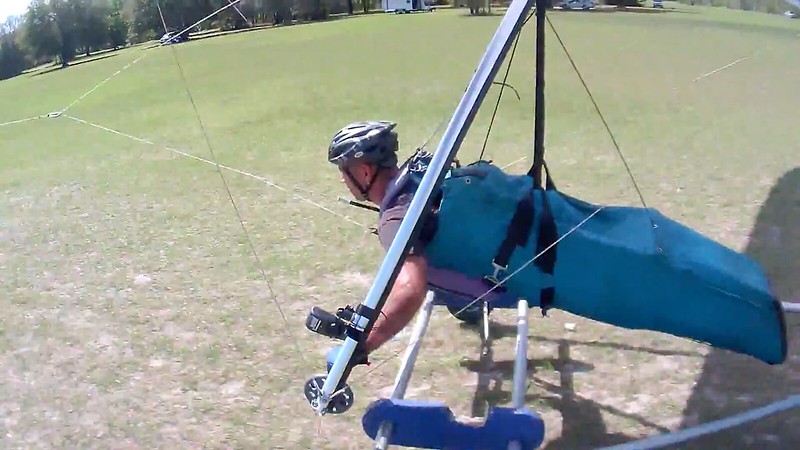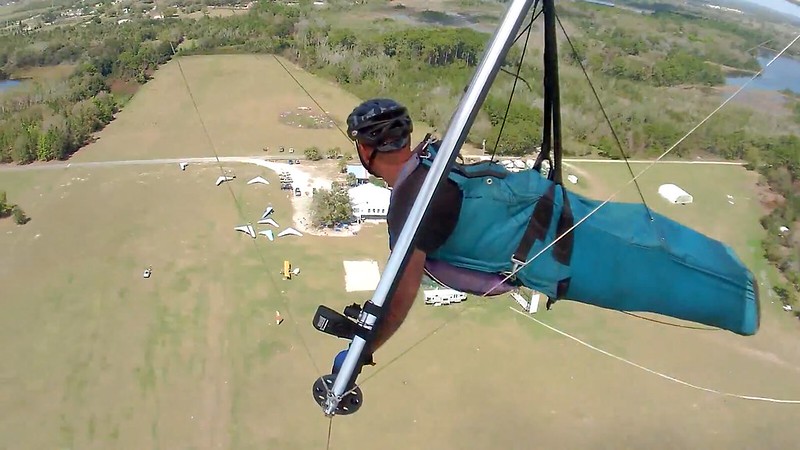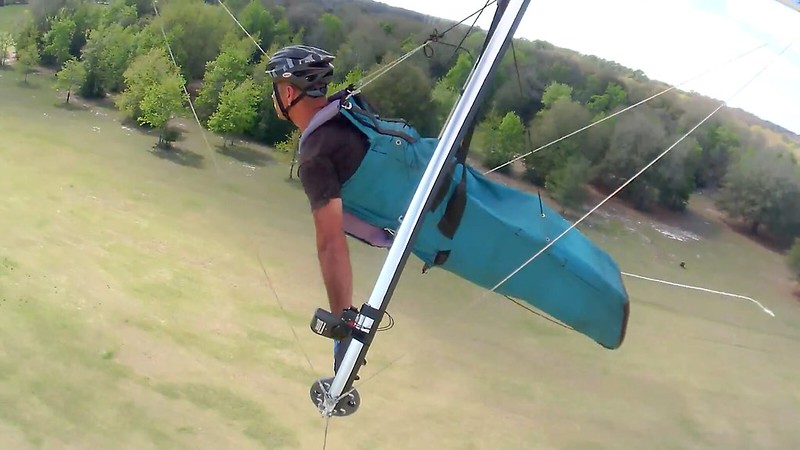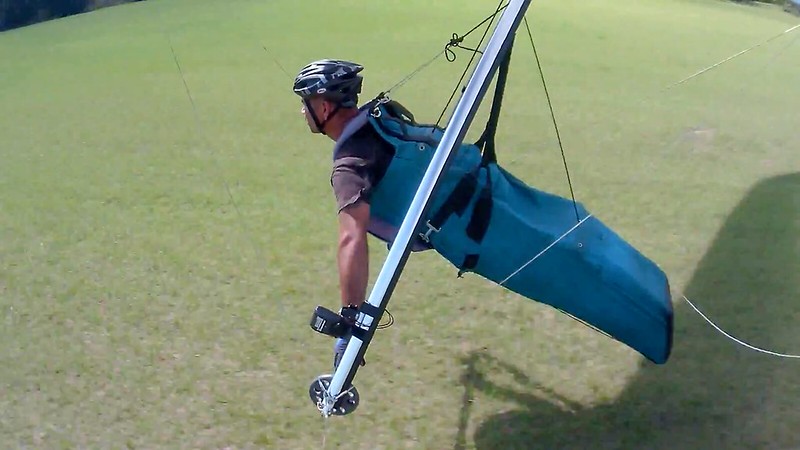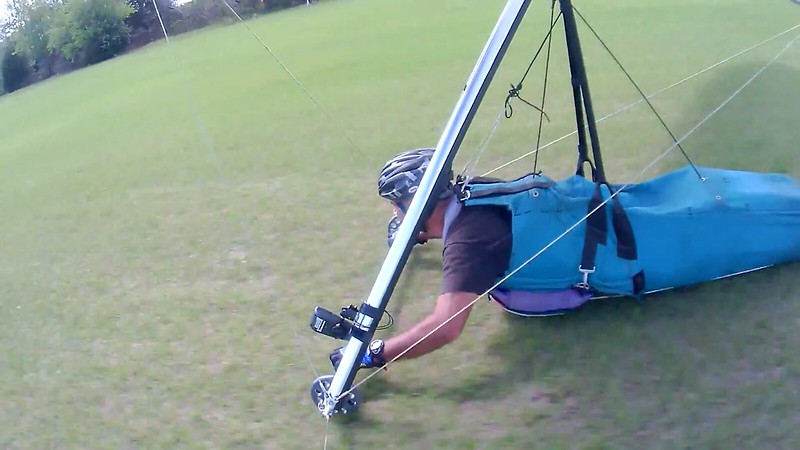http://sonomawingsbb.yuku.com/topic/5825/4144-Review
4144 Review
rcpilot - 2016/05/29 06:49 UTC
Any comment on Jeff Bohl's predictable fatal crash, Eric?
Eric Beckman - 2016/09/09 23:51:33 UTC
If Jeff Bohl's fatality was predictable...
IF?
Airline / hotshot Hang Four comp pilot on a topless bladewing pulling up pilot only with a cheap bent pin placebo release with a very long track record with a Tad-O-Link with a very short track record behind an anonymous total moron on an underpowered tug in ninety cross on short runway necessitating a right ninety below treetop level to stay in clear air.
Tell me something GOOD about that operation.
And one more thing that just occurred to me.
Risk Mitigation Plan for the Quest Air Open
1. Personnel
Meet Director - Belinda Boulter
Safety Director - Belinda Boulter, in consultation with Russell Brown
Towing Director - Russell Brown
Launch Director - Spencer Kindt, highly experienced Quest Air Manager and tandem instructor. Previous experience launching pilots at two Quest Air meets in 2015.
Launch Line Coordinator - Kate Griffin. Highly experienced launch coordinator at Quest Air and Whitewater, Wisconsin.
Launch Area Assistant - Dolores Mordesani
Launch Line Assistants - Yvonne Sargent, Michelle Haag, Dolores Mordesani
2. Pilot Qualifications
Pilots must have the following minimum certifications or their national equivalent: Hang 3, RLF, Aerotow.
Pilots must have aerotowed with the glider that he/she is flying or similar at least ten times. Practice tows will be available onsite during the days leading up to the competition.
Both the Meet Director and the Towing Director have the power to exclude from the competition pilots who demonstrate a lack of the necessary skills for safe launching, flight or landing, or who lack the fitness to fly safely due to injury, drugs or medication that might affect the pilot's performance in the air.
It is the responsibility of every pilot to fly in such a way that personal safety and the safety of others is maintained at all times. Directors may penalize competitors who fail to observe this rule, or exclude them from the results.
Pilots are required to follow instructions given to them by meet officials expeditiously or risk penalty. Pilots will be instructed where to set up their gliders in the staging lines, where to enter the launch lines, and how to be prepared to launch safely. Pilots need to follow these instructions carefully.
3. Safety Committee
A Safety Committee of three competitors will be named at the first pilot briefing. The Committee will assess each task for safety aspects including weather, airspace and potential hazards after the task is first determined by the task committee. The task can be disapproved at that point and would have to go back to the task committee for revision.
The Safety Committee will determine maximum wind speeds (or speeds depending on direction) for the competition in conjunction with the Safety Director.
The Safety Committee will meet with the Safety Director on launch just before launch opening for a final assessment of the conditions and safety aspects of the task.
4. Weather forecasting, task planning.
The weather forecaster will be a member of the Task Committee. He will discuss at each Committee meeting any anticipated potentially hazardous conditions for that day. The Task Committee will take these conditions into consideration in the setting of each task.
5. Safety briefing
A Safety Briefing will be included in the first Pilot Briefing, using the Risk Assessment outlines in the USHPA Sanctioning Manual, and including weak links, bridles, launching and towing issues.
Subsequent daily Pilot Briefings will include specific safety issues for that day, such as weather conditions, controlled airspace, potential obstructions and dangers along the route and at goal. Risks reported by pilots and meet staff, and any risky behavior observed will also be discussed.
The Weather Forecaster will discuss any potential safety issues as part of that day's weather presentation.
The Weather Forecaster and Task Committee cannot predict every circumstance that a pilot may encounter during the task. It is ultimately the pilot's responsibility to observe conditions and fly in a safe manner, or to land if necessary.
6. Equipment safety check in advance
All gliders and associated equipment shall be of sufficient performance and standard of airworthiness to meet the demands of international championships, and shall be flown within the airworthiness limits established by the manufacturer. Pilots are responsible for proper setup and pre-flight checking of all equipment.
Helmets and parachutes are mandatory.
Pilots will be encouraged to fly with radios, and a list of pilot radio frequencies will be maintained by the Meet Director.
Russell Brown will be in charge of pre-checking all the tugs. He will "green tag tugs" for flight operations each day, and "red tag" any not ready.
Quest Air staff will pre-check launch carts: grease the wheels, check tires for air pressure, check cradles, check keel height adjuster clips and have extra clips. Carts will be set to the right height for pilots. Carts will be kept in good condition and with proper tire pressure during the competition; an air pressure tank will be available at the cart setup area.
All tow ropes will be pre-checked, and extra ropes will be on hand. Proper carabineers will be used on the tow planes, with extras available.
Appropriate pilot weak links will be made up in advance. Pilots must use weak links provided by the meet organizers and in a manner approved by the meet organizers. All weak links will be checked on launch, and use of inappropriate weak links will require the pilot to go to the end of the launch line to change the weak link.
Weak links should be placed at one end of a shoulder bridle. The tow forces on the weak link will be roughly divided in half by this placement. Pilots will be shown how to tie the weak link so that it more likely breaks at its rating breaking strength.
Competitors must use appropriate aerotow bridles as determined by the Meet Director and Safety Director and their designated officials. Bridles must include secondary releases (as determined by the Safety Director). Bridles must be able to be connected to the tow line within two seconds. The only appropriate bridles can be found here:
http://OzReport.com/9.039#0
ProTow

and:
http://ozreport.com/9.041#2
More Protows


Pilots with inappropriate bridles may purchase appropriate bridles from the meet organizer.
Does this mean no bike-handle releases, even for Sport Class? Nope.
7. Launch placement.
Each morning the launch area will be determined by the Towing Director based on the weather forecast, and will be announced at the Pilot Briefing. The launch placement will be confirmed or changed one hour before launch time.
Pilots must have all their gear and gliders in the launch area, away from the takeoff and landing areas, half an hour before launch open.
The Meet Director can suspend launch at any time for any safety issue. The Meet Director/ Launch Director can stop any pilot from launching who does not appear capable of launching safely. Launch will be suspended if there is an incident/accident in Quest Air field.
8. Launch procedures.
Both the Meet Director and the Towing Director have the power to ban flying from the site if a task or day is cancelled due to dangerous conditions.
Flags and/or streamers will be set out on the launch area, with larger wind indicators mid-field.
This competition will use an ordered launch, with numbered staging lines and launching in numeric order. There will be a "launch box" for the pilot preparing to launch next. There is no pushing (there is an implied push with an ordered launch). Pilots will not have to stay in their gear getting too hot because they will know when it is their turn to launch. The Task Committee may choose to offer an "earlybird" launch if that is deemed safe and desirable. Numbered launch and staging lines will keep pilots from tussling for position and help keep tempers cool.
Launch lines will be directed away from tug traffic. There will be a designated landing area and setup for tugs. There will be a designated landing area for hang gliders away from tug landing area and out of the tug setup area.
Launch crew will assist pilots in moving from the staging line to the launch line, with cart height adjustments, and with any last-minute equipment issues. The Launch Director will provide a final hang check for every pilot. He will wave off the tug only when he deems that conditions are safe and clear of any air traffic.
All that horsepower focused on getting the pilots into the air as safely as human competence and state-of-the-art towing technology will allow. Best minds in the business, proper ratings, solid gliders and carts, tow ropes (Hell, can you imagine what could happen if one of those failed with the glider climbing hard in a near stall situation? Makes me shudder to think about it.), proper carabineers, extra carabineers, appropriate bridles (illustrated), appropriate weak links (not illustrated), launch crew to assist with any last-minute equipment issues, Launch Director providing a final hang check for every pilot...
And NOBODY catches the unstowed/dangling camera that was the catalyst for the fatality.
Time machine... Go back and stuff Davis's:
Risk Mitigation Plan for the Quest Air Open
back up his ass. NOTHING and NO ONE in place to protect the comp pilots from themselves. How many more launch and/or landing fatalities would we predict would have occurred?
...why didn't you save him? My God, Steve!
Why didn't YOU save him?
Eric Beckman - 2015/10/18 07:59
I have never personally seen a "perfect" system that prevents any possibility of failure, which is why it's so important to have a "correctly sized" weak-link for each pilot and glider combination.
Why didn't you post a caution for people to use "correctly sized" weak links?
Eric Beckman - 2015/11/02 04:54:50 UTC
To answer your question "What is the correctly sized weak link for me, Eric?," I suggest you read the article "Tie a (Better) Weak Link" from Drs. Lisa Coletti and Tracy Tillman's "Higher Education" column in Hang Gliding & Paragliding magazine. It will help you determine what you need. Please exercise your own judgement if you feel aero-towing presents too many risks, and do not fly hang gliders via aero-tow.
You could've read the article "Tie a (Better) Weak Link" from Drs. Lisa Coletti and Tracy Tillman's "Higher Education" column in Hang Gliding & Paragliding magazine which would've helped you determine what different people needed and told them. Pretty fucking obvious the Quest Open meet heads weren't up to the task. And that's really surprising considering that Dr. Trisa Tilletti learned everything they know about "correctly sized" weak links from Russell Brown, the Towing Director and consultant to the Safety Director.
Sorry if my comment isn't what you might be looking for...
That's OK, Skyslime. There's nothing you write that isn't extremely valuable with respect to the mission.
...but even rereading through all your posts in this thread do not reveal to me your ultimate goal here short of trying to make me look bad in some way.
As many ways as possible, Eric. And we DO so appreciate the help you continue to provide.
Suit yourself, and be thankful along with me that it's still a free country.
Really?
Here is part of my earlier post that you are free to like or dislike, but which reiterates my position:
Aero-towing does present additional risk and complexity to hang glider flight, but to say that I have no reasonable expectation to remain on tow or separate from it is just fundamentally wrong given my own empirical experience and the actual numbers of aero-tow flights conducted annually worldwide.
Still drivel.
If the statement was even remotely true, no one would aero-tow.
No one's aerotowing in my neck of the woods anymore. Never will again either. And that's since your earlier post from which you're quoting. And here's its star tug pilot and hang gliding's top expert on everything:
03-10
http://c1.staticflickr.com/9/8654/30042407326_de4f1e1b4c_o.png

getting airlifted off of Coronet Peak - again - after a tandem thrill ride went a bit sour - again.
And how do you expect that facet of the sport to survive without him giving us the benefit of his expert opinions on all the issues he's sussed out so well?
That is not to suggest that current training techniques and standards are without fault. It is imperative that we continue to pursue safety improvements in every facet of our sport, but sensationalized rants only cloud the real issues and turn opportunities for change into battles of opinion and position.
Yeah. Couldn't have said that any better. 'Cept maybe:
[
http://ozreport.com/forum/viewtopic.php?t=31052
Poll on weaklinks
Jim Rooney - 2013/03/03 19:37:19 UTC
My response is short because I've been saying it for years... and yes, I'm a bit sick of it.
This is a very old horse and has been beaten to death time and time again... by a very vocal minority.
See, most people are happy with how we do things. This isn't an issue for them. They just come out and fly. Thing's aren't perfect, but that's life... and life ain't perfect. You do what you can with what you've got and you move on.
But then there's a crowd that "knows better". To them, we're all morons that can't see "the truth".
(Holy god, the names I've been called.)
I have little time for these people.
It saddens me to know that the rantings of the fanatic fringe mask the few people who are actually working on things. The fanaticism makes it extremely hard to have a conversation about these things as they always degrade into arguments. So I save the actual conversations for when I'm talking with people in person.
A fun saying that I picked up... Some people listen with the intent of understanding. Others with the intent of responding.
I like that.
For fun... if you're not seeing what I mean... try having a conversation here about wheels.
And maybe:
Dr. Trisa Tilletti - 2012/06
For some people, talking about weak links is more like talking about religion, politics, or global warming--they can get very emotional about it and have difficulty discussing it logically, rationally, or with civility.
I so do want to apologize for my sensationalized rants which only cloud the REAL issues and turn opportunities for change into battles of opinion and position.
I have now, thanks to fine individuals like you, Jim Keen-Intellect Rooney, Dr. Trisa Tilletti who selflessly risk their lives driving Dragonflies to provide us muppets soaring opportunities, seen the error of my ways and will cease thwarting your efforts to determine just what a "correctly sized" weak link is.
There's gotta be a u$hPa clinic these Dragonfly motherfuckers attend to be able to write total...
http://ozreport.com/forum/viewtopic.php?t=30971
Zach Marzec
Deltaman - 2013/02/16 22:41:36 UTC
How is that possible to write so much ..and say NOTHING !?
...rot like this. The pattern is too distinctive to have come about through individual effort.
So go ahead, Skyslime... Tell us ONE THING in aerotowing that's changed for the BETTER in the last couple decades. And if you're gonna cite the transition from:
http://farm9.staticflickr.com/8394/8696380718_787dbc0005_o.png
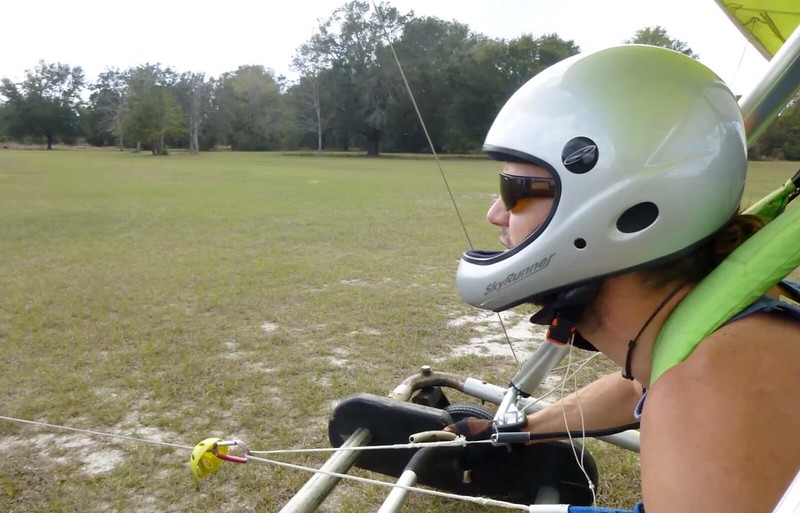
to:
02-00820c
http://c2.staticflickr.com/8/7252/27169646315_9af9a62298_o.png
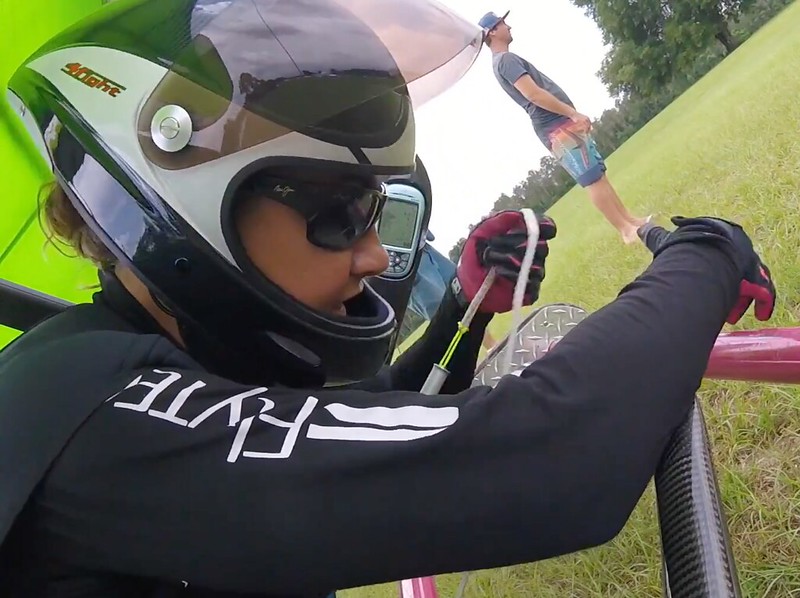
tell me:
- who the people who were actually working on things were
- what:
-- their thinking was in regards to replacing something with an extremely long track record
-- it is they're now using so we muppets can achieve better understandings of what a "correctly sized" weak link is nowadays







